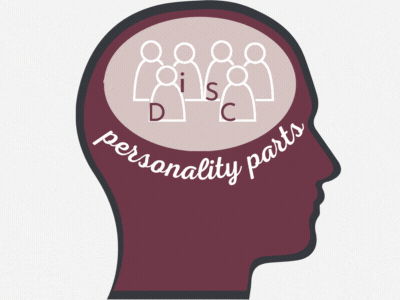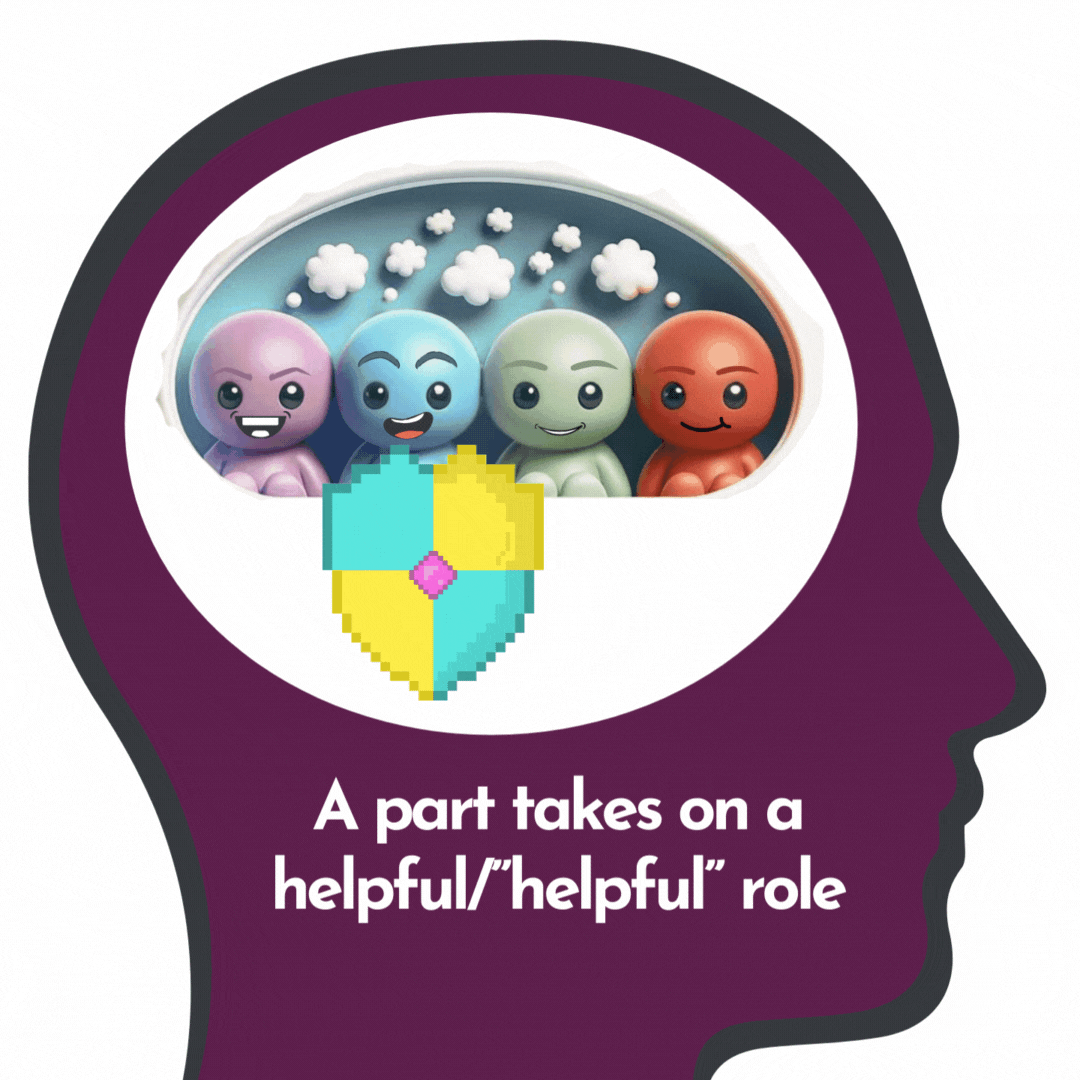“Your parts are never gonna stop trying to help you, so you may as well make sure they are helping you.” – Jessika Jake
NO TO: Kill the ANTS (automatic negative thoughts), slay your inner dragons, distract yourself from your saboteurs… NO to: “You can’t change your thoughts but you can fight them….” NO to: “Your inner critic will never go away.”
YES TO: Actually getting to know your parts, and how they think they are helping you. YES to: Creating better relationships with your parts. YES to: Shifting their roles. YES to: True inner harmony.
We All Have Personality Parts
Contemporary neuroscience and psychology bring us the concept of multiplicity of mind. Our internal world is populated by various personality parts, each with its own perspectives, feelings, and memories. We don’t have a monolithic personality but rather an inner team — lots of parts! If you have ever heard of DiSC or any other personality model, each of those letters represent different personality parts: The Decisive part, the influential part, the Supportive part, the Conscientious part. We actually have more than 4 parts. DiSC has been around for about 100 years, and in its recent evolution to the DiSC DiSCO, now recognizes this 4 parts and more. That’s right: We all have more than 4 parts. No part is better than another.

The Helpful/”Helpful” Shields Our Parts May Come to Yield
Based on life experience, parts may recalibrate to take on an extreme or new role. The example roles described below are not meant to be prescriptive, but rather to offer up some common stories of the “new jobs” our parts may take on and the why behind this helpful/”helpful” tweak… As you read below, and as you reflect on parts you see in your self and others, seek to understand the helpful intent behind new or extreme roles. Seek to understand why they came about and what your part fears will happen if it release this role.

In taking on a role shift, these parts possess a hypervigilant quality. They are primed and ready to respond to potential threats, with heightened sensitivity to environmental cues, and a matching heightened full-body response. It’s their way of trying to be helpful, based on past experiences where this “new role” was deemed necessary for survival: Taking on this role in the past may have very well been a true life saving response. This role shift has helpfully/”helpfully” stuck with them, like a shield they carry. Some roles seek to prevent the occurrence of a similar, wounding, event. Some will jump in anytime a similar event happens.
THE PROTECTOR SHIELD (HYPER CONTROL, HYPER ACHIEVER, RISK TAKER)
If you like the DiSC DiSCO, this may be a D (Decisive) part that recalibrated itself to be a protector
- Possible Role Shift(s): Initially, this part may take on the role of overprotection through control and assertiveness, aiming to shield the self from vulnerability or perceived threats to success.
- Possible Positive Intent: This part seeks to ensure safety and accomplishment, demonstrating strength and leadership. Unf*ck-with-ability. There are many possible reasons for this role shift; Perhaps this person was bullied as a child, and bullying ended when this part rose to annihilate the attacker.
THE CHAMELEON SHIELD
If you like the DiSC DiSCO, this may be an i (Influence) part that recalibrated itself to be a protector.
- Possible Role Shift(s): This part adapts its behavior and presentation to fit in and gain approval, often changing colors like a chameleon to match the emotional or social environment. This adaptability can be a strength but may also lead to losing touch with one’s authentic self, as the part prioritizes connection and approval over personal authenticity.
- Possible Positive Intent: Its aim is to create harmony and positive relationships.
THE HARMONIZER SHIELD (PEOPLE PLEASER, SOOTHSAYER)
If you like the DiSC DiSCO, this may be an S (Supportive) part that recalibrated itself to be a protector.
- Possible Role Shift(s): In its effort to maintain peace and stability, this part might become overly accommodating, neglecting personal needs.
- Possible Positive Intent: It seeks to create a safe and conflict-free environment, prioritizing the well-being of others, possibly because this is how the part kept the person safe, e.g. during early childhood abuse. In its quest to maintain peace and avoid conflict, this part might also predict potential problems or conflicts before they arise, often worrying about future scenarios that could disrupt harmony. This anticipation can be helpful in preventing issues but may also lead to anxiety and stress as the part becomes overly preoccupied with maintaining stability at all costs.
THE GUARDIAN SHIELD (THE CRITIC, PERFECTIONIST ARCHITECT, HEADY)
If you like the DiSC DiSCO, this may be a C (Conscientious) part that recalibrated itself to be a protector.
- Possible Role Shift(s): Driven by a desire for perfection and order, this part may become overly critical or rigid, focusing on details to avoid mistakes. Or, maybe this part calibrates to become a perfectionist architect — meticulously plans and structures every detail of projects or tasks, seeking to construct a flawless outcome. While this can lead to high-quality results, it may also result in rigidity and an inability to adapt to changes or unexpected challenges, driven by fear of failure or criticism. This intellectual overreliance can serve as a defense mechanism, protecting the part from facing uncertainties or emotional vulnerabilities directly.
- Possible Positive Intent: It aims to ensure reliability and quality, protecting the person from external criticism or public failure.
The example roles of Protector Shield, Connector Shield, Harmonizer Shield, and Guardian Shield are essentially about protecting more vulnerable parts (wounded parts) of ourselves from further harm. It’s possible for everyone to make shifts towards a state where their protective parts feel secure enough to relax their vigilance, allowing the wounded parts to be healed. When this happens, the Parts Patrol parts take on more beneficial roles AND the wounded parts can come out of hiding… now healed and shining with their own beautiful resourcefulness.
If you are interested in learning about healing traumatized parts, you will love the evidence-backed Internal Family Systems (IFS) Model. You can attain inner harmony, heal traumas, etc. Don’t believe those who say otherwise. All parts have helpful intent. Do not bash your parts, rather get to know them with their permission and help them to drop their burdens. Note that IFS is used in a coaching (human development) and therapeutic sense (for diagnosable disorders). Based on your specific needs, seek out a qualified IFS professional or content produced by one.